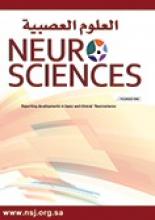Abstract
OBJECTIVE: This study was conducted to determine whether there is a relationship between hand preference and the site of cranial venous return. Magnetic resonance angiography was used for the determination of the site of dominance of cranial venous return.
METHODS: Forty-seven right-handed and 45 left-handed subjects participated in the study conducted at the Sevgi Hospital in Ankara, Turkey between 1996 and 2000. The site of cranial venous return was determined by calibration of the superior jugular bulbus and named as right (R), left (L) and right-left (R-L). Calibrations of superior jugular bulbus were analyzed by one way variance analyses.
RESULTS: There were statistically significant differences when analyzing the hand preference and calibration in the subjects with a venous return from the left, than from the right and right-left. The site of venous return (R, L, R-L) and venous calibration were analyzed by student t-test and were not statistically significant.
CONCLUSION: The venous return was from the left in right-handed subjects and from the right in left-handed subjects. Correlation’s of hand preference and age and sex could not be made. For both-sided venous return, ambidexterity could not be determined.
- Copyright: © Neurosciences
Neurosciences is an Open Access journal and articles published are distributed under the terms of the Creative Commons Attribution-NonCommercial License (CC BY-NC). Readers may copy, distribute, and display the work for non-commercial purposes with the proper citation of the original work.






